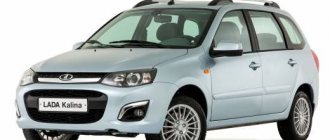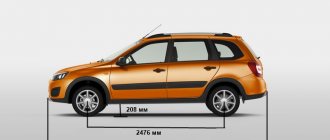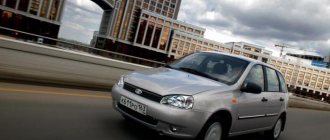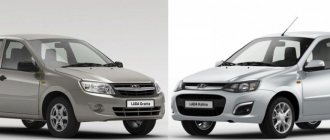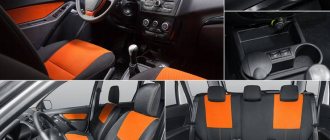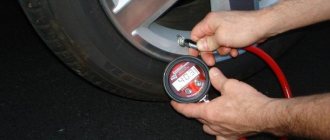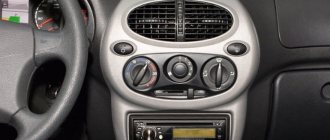When AvtoVAZ presented the second generation Lada Kalina, many who were not indifferent to the products of the domestic automobile industry immediately stated that the new product could easily compete with foreign cars in terms of consumer qualities. If we talk about ergonomics, dynamics, spaciousness and controllability, then this is really true. Foreign "state employees" with a noticeably higher price were clearly not head and shoulders above Kalina. But with reliability, everything is no longer so clear. Many were afraid to purchase a domestic car only because of frequent breakdowns.
From the first steps to the present day
In the late nineties, AvtoVAZ management decided to abruptly move to a new level of operation of the enterprise. A major modernization of production is underway. The management of the concern came to the conclusion that the time had come to update the model range. As a result, a directive was issued to create a new project that would simultaneously meet several design objectives:
- would be attractive in appearance, capable of competing with Western counterparts;
- would have the appropriate quality, a new technical component, powerful, high-quality, reliable;
- would belong to the budget category.
Work was in full swing. There were still many difficulties ahead, primarily of a technical nature. After all, engineers had to work in completely new conditions, using previously unknown technology, very complex and multifaceted.
At the beginning of the 2000s, a detailed layout was ready. It still needed serious adjustments, but it was already possible to understand what the outcome would be. Having identified the problem areas, the engineers began to implement the task. Western colleagues helped them in this. Thus, in the synthesis of world experience and the introduction of native Russian professionalism, a new model was born, Lada Kalina. The debut of the car took place on November 18, 2004.
Photos of Kalina 2022 salon
As a result of the change of generations, a completely new interior, an automatic transmission from the Japanese manufacturer Jatco, became available to customers, and a little later a domestic robotic version of the AMT was added to this. A lot of modern options have appeared, ABS+BAS, ESP and TCS systems, passenger airbags, heated front seats and much more. Photos of the interior are attached below.
Kalina station wagon salon
Kalina station wagon multimedia
Kalina station wagon glove box
Kalina station wagon rear sofa
Kalina station wagon rear seats
Kalina station wagon trunk
Kalina station wagon photo trunk
Kalina station wagon spare tire
Technical characteristics of a used Lada Kalina 2
Steering gear and chassis
The suspension of Kalina, as well as that of the Cross version, copes well with our roads. Frankly, there are no weak points in it. Provided you use high-quality consumables, you will have to remember about it no more than once every 70-80 thousand kilometers. Shock absorbers, ball joints and silent blocks have approximately the same service life. Suspension arms give up later - only after 150 thousand kilometers. Those who want to save money can find frankly cheap and not very high-quality Chinese spare parts, but their replacement interval will also be reduced. As a result, there will still be no significant savings, and you will have to spend more time visiting the service.
The weak point of the used Lada Kalina 2 is the rack and pinion steering mechanism. It can start knocking after 50 thousand kilometers. Most often, tightening the mechanism helps get rid of knocking. If not, then you will have to contact the experts to rebuild it. Fortunately, this procedure for Kalina is not very expensive.
Motor reliability
The base engine for the second generation Kalina is the 87-horsepower eight-valve VAZ-11186. This engine has low-end torque and revs well at high revs. So, despite not the highest power, it can be fully recommended for Kalina. The main thing to remember is that in this engine, when the timing belt breaks, the valves bend. The conclusion suggests itself - it’s not worth waiting until the factory-recommended mileage of 60 thousand, at which time the timing belt needs to be serviced. It is better to protect yourself and do this after the mileage exceeds 50 thousand kilometers.
In addition, owners should definitely monitor the condition of the rollers and water pump. If there is a backlash in the pump, then under no circumstances should you postpone visiting the service. Immediately after starting, the used Kalina 2 engine may make a characteristic clicking sound. Many owners are sure that these sounds are made by hydraulic compensators, but in fact this is a clear hint that the valves require adjustment. If nothing is done, then after 40-50 thousand kilometers the valves will burn out.
The second power unit available for Kalina with the same volume of 1.6 liters develops 98 horsepower. It doesn't make much sense to pay extra for this motor. In terms of dynamics, it is only slightly better than the 87-horsepower power unit. It's another matter if you are looking for a Kalina with an automatic transmission. In this case, there will be no alternative to the 16-valve 98-horsepower engine.
The most powerful Kalinovsky engine with a volume of 1.6 liters develops 106 horsepower. The motor turned out to be very flexible and is excellent even for the relatively heavy Cross version, but the problem with valves bent when the timing belt breaks is also typical for it. If we talk about the general disadvantages of VAZ engines, then they include an unreliable thermostat. Sometimes used engines start to misfire, which can be treated by replacing spark plugs and ignition modules.
Video: Lada Kalina 2 (expert opinion)
Possible problems with electrical and gearbox
The weak point in the electrical system of a used Kalina 2 is the generator. On average, it lasts 3-4 years. Although there is hardly any need to be seriously upset about this. The cost of a new generator and its replacement is low. After a mileage of 75 thousand kilometers, the oxygen sensor will need to be replaced. From time to time you will have to clean the throttle valve, which will help avoid floating speed. If this does not help, you need to replace the idle speed and throttle sensors. Sensors for Kalina are inexpensive.
The most common transmission on Lada Kalina is a 5-speed manual. And if on cars of the first generation it often reminded of itself, then on the “second” Kalina the seriously redesigned mechanism is distinguished by quite high reliability. Thus, the clutch can last 100 thousand kilometers, and the gearbox itself will require repair only after a run of 200 thousand kilometers.
There are no complaints about the Jatco automatic transmission either. With proper operation, it will not remind you of itself before a run of 200-250 thousand kilometers. There is also no need to worry about possible repairs to the machine. Due to the simple design of the box, it will not be so expensive. And they will take it up in any service that deals with similar problems.
The third transmission option is a robotic gearbox, where the clutch automatically closes and opens using servos. And if the “robot” does not work the best on the Vesta model, then on the lighter Lada Kalina there are much fewer complaints about it. Due to the fact that the electronics handle the clutch extremely carefully, its service life on the robotic Kalina is often even higher than on cars with traditional “mechanics”.
For a poor buyer who counts every penny, a second-generation second-generation Lada Kalina can be an excellent car for every day. For the same money, of course, you can buy a Renault Logan, but other things being equal, it will be worse equipped and have a higher mileage. And in terms of reliability, foreign cars do not have a noticeable advantage. As it turned out, Lada Kalina 2 is far from those “semi-finished products” that were produced at AvtoVAZ not so long ago. So you can safely buy domestic “berries”.
Advantages and disadvantages
Pros of the car
- Comfortable car;
- Acceptable build quality;
- Modern and quite stylish appearance of the hatchback;
- There is a choice between power units;
- Increased engine power;
- More convenient location of sensors and scales;
- An airbag is present even in the basic configuration;
- There is a reliable suspension, which has an increased resource;
- Improved aerodynamic component of the car;
- Good ride height;
- Comfortable interior;
- Pretty good front soft seats;
- Lots of free space;
- Availability of a touch display;
- Good top-end equipment;
- Quite low consumption of power units;
- Reinforced body.
Cons of the car
- Even in the basic configuration the price of the car is very high;
- Small luggage compartment volume;
- Fairly light steering wheel with no feedback from the road surface;
- Noisy and rather outdated 8-valve power unit;
- Hydraulic headlight adjustment;
- There is no sensor on the prior panel that shows the coolant temperature;
- Still poor build quality;
- Appearance is not for everyone;
- Weak engines;
- Low level of security;
- The back row is only comfortable for two passengers; a third will be extremely uncomfortable.
First changes
In the summer of 2007, the first restyling of the model took place. The appearance has remained virtually unchanged, with the exception of minor decorative elements. But new power units have appeared. Under the hood there was now a 1.4-liter sixteen-valve gasoline engine, which in the improved version reached a speed of 170 km/h. In September of the same year, engineers presented to the Russian public a modification with ABS.
The restyling of the model was theoretically good. But practically the engineers failed to cope with this work. More than one thousand cars had to be recalled due to serious defects in the steering column and other defects. The plant's reputation then suffered greatly. The most powerful advertising and propaganda was launched, in which even the President of the Russian Federation took part. AvtoVAZ was preparing the next restyling, which took place in 2009. But AvtoVAZ achieved much greater results in 2011, when the last restyling of the first generation of the model was carried out.
The car has become much better and more dynamic. Flaws faded into oblivion of the past. The technical mistakes of engineers were forgotten. Thanks to the skillful work of PR managers and marketers, Lada Kalina acquired a new status, appearing even before a foreign audience. The sports version, which differed little from Western similar projects, was especially actively moving forward.
Lada Kalina
The multimedia system with a 7-inch touchscreen is absolutely space. She doesn’t have a CD drive, and she probably doesn’t need one, since most music and movies are now downloaded from the Internet. I didn’t say anything about films! From a USB drive or SD card, Kalina can play not only photos, but also videos. True, you will have to find in the depths of your home computer the program that we used five years ago to compress video for communicators: the image size should not exceed 320x240 pixels. But, unlike foreign cars, you can watch a film while moving - there is no fool proof here, so the user takes responsibility for driving in a cinema on wheels.
And overall impressions of the car are positive. The front panel with unflattering carbon fiber inserts is monolithic! Like door trims from Granta, which look simple, but minimize the risk of “crickets” appearing. The front seats have a short cushion and a suboptimal backrest profile, but overall it’s much better than you’d expect from a domestic car. It would be better to install them lower, or even better, add height adjustment to the cushion, and reach adjustment to the steering wheel...
Finding the number depending on the body type: hatchback, sedan, station wagon
The photo above shows that the powertrain number and VIN are installed on the vehicle inside the engine compartment.
Due to this feature, the markings retain their position, regardless of the type of vehicle body. If we are talking about car body identification symbols, the second copy is installed on the rear right arch.
To access the inscription, lower the back of the saddle and move the trim aside.
